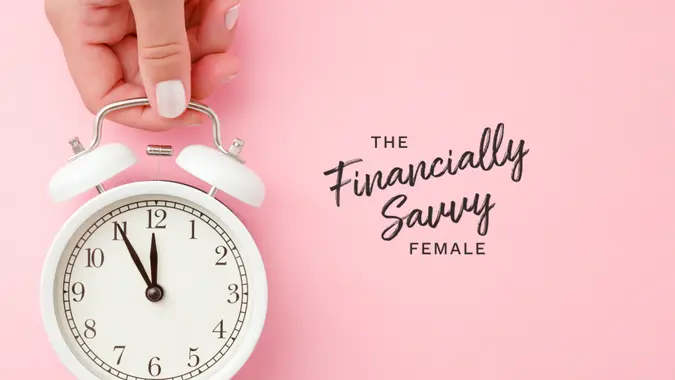401(k) Loan for a Down Payment: Is It Worth It and How to Do It Right

Commitment to Our Readers
GOBankingRates' editorial team is committed to bringing you unbiased reviews and information. We use data-driven methodologies to evaluate financial products and services - our reviews and ratings are not influenced by advertisers. You can read more about our editorial guidelines and our products and services review methodology.

20 Years
Helping You Live Richer

Reviewed
by Experts

Trusted by
Millions of Readers
Buying a home is exciting, but saving enough for the down payment can feel like an uphill climb. Some buyers turn to their retirement savings, taking out a 401(k) loan for a down payment to boost their buying power. It’s one way to get into a home sooner and possibly avoid private mortgage insurance (PMI), but the trade-off is slowing down your retirement growth.
This guide explains the 401(k) loan rules, the pros and cons and how to know if borrowing from your retirement plan is the right move for your financial situation.
What Is a 401(k) Loan and How Does It Work?
A 401(k) loan lets you borrow from your own retirement savings without triggering early withdrawal penalties. Unlike cashing out, you’re required to repay the balance — typically through payroll deductions.
- Loan limit: You can borrow up to 50% of your vested account balance, capped at $50,000.
- Repayment period: Most loans must be repaid within five years, though loans used for a primary home purchase may qualify for extended terms.
- Interest: Paid back into your account, so technically, you’re paying yourself.
- Payments: Made after-tax, which means you’ll also pay taxes again when you withdraw in retirement.
According to the Employee Benefit Research Institute, about 17% of 401(k) participants had loans outstanding in 2022, showing that this is a relatively common strategy.
Step-by-Step Chart: How to Take a 401(k) Loan for a Down Payment
| Step | What To Do | Why It Matters |
|---|---|---|
| 1. Check Eligibility | Confirm your employer’s 401(k) plan allows loans. | Not all plans permit borrowing, so this is the first step. |
| 2. Review Your Balance | Calculate how much of your vested balance you can borrow (up to 50%, max $50,000). | Helps you know if it’s enough for your down payment. |
| 3. Understand Repayment Terms | Ask about loan length (5 years standard, longer for home loans) and payroll deductions. | Avoids surprises and ensures you can afford repayments. |
| 4. Submit Loan Request | Apply through your plan administrator (often online). | Starts the approval and funding process. |
| 5. Receive Funds | Loan proceeds are typically deposited in your bank within a week. | Ensures money is ready for your closing timeline. |
| 6. Use Funds for Down Payment | Apply the funds toward your home purchase. | Helps you reach 20% down to avoid PMI or reduce mortgage size. |
Why Use a 401(k) Loan for a Down Payment?
Homebuyers turn to 401(k) loans for a few specific reasons:
- Avoid PMI: PMI can add 0.5% to 1.5% to your loan amount per year. Borrowing from your 401(k) to reach 20% down can save thousands annually.
- Lower mortgage costs: A bigger down payment means a smaller loan, which keeps monthly payments lower.
- Access without a credit check: Since it’s your money, there’s no lender review or impact to your credit score.
- Cheaper than other borrowing options: The average personal loan rate in late 2024 was 12.2% according to the Federal Reserve, while many 401(k) loans are set just a couple of points above the prime rate.
401(k) Loan Rules for Home Purchases
If you’re considering this option, here are the key 401(k) loan rules to keep in mind:
- Borrowing limit: The lesser of 50% of vested balance or $50,000.
- Extended terms for home loans: Some plans let you stretch repayment to 10 to 15 years if the funds are for your primary residence.
- Repayment through payroll: Payments are automatically deducted after taxes.
- Job changes complicate things: If you leave your job, you’ll need to repay the loan in full by the following year’s tax filing deadline, or the balance will be treated as a taxable withdrawal.
Pros and Cons of Using a 401(k) Loan for a Down Payment
Here’s a quick look at the upsides and downsides of using this strategy:
| Pros | Cons |
|---|---|
| Lower cost than personal loans or credit cards | Slows down retirement growth and compounding |
| Interest is paid back to you, not a lender | Risk of repayment due if you leave your job |
| Helps you hit 20% down to avoid PMI | Repayments are taxed twice — now and at withdrawal |
| Can lower mortgage and monthly payments | Not all plans allow loans; limited flexibility |
401(k) Loan vs. Other Down Payment Options
| Option | Impact on Retirement | Costs/Interest | Best For |
|---|---|---|---|
| 401(k) Loan | Temporarily reduces growth, must repay | Low interest, no penalties if repaid | Buyers with large 401(k) balances |
| Personal Loan | No effect on retirement | Higher interest rates (avg. 12%+) | Buyers without retirement funds |
| Roth IRA Withdrawal | No penalty on contributions; $10k exception on earnings | No interest, but shrinks Roth savings | First-time homebuyers with Roth IRA |
Is Using a 401(k) Loan for a Down Payment Worth It?
Whether this is the right move depends on your balance, job stability and long-term retirement goals.
- Good fit: If tapping your 401(k) lets you avoid PMI, reduce mortgage costs and you’re confident in job stability.
- Risky choice: If it drains a large portion of your retirement or if your employment situation is uncertain.
According to Fidelity, the average 401(k) balance for Americans in their 60s is about $182,100. Borrowing even a fraction of that could significantly cut into retirement income, so weigh carefully.
Final Take to GO
Using a 401(k) loan for a down payment can be a smart shortcut if it helps you avoid PMI or high-interest borrowing. But the 401(k) loan rules are strict, and the risk to your retirement future is real.
Before borrowing, compare alternatives like Roth IRA withdrawals, down payment assistance programs or simply waiting to save longer. For most buyers, the short-term gain of getting into a home sooner needs to be carefully weighed against long-term retirement security.
Want to learn more? Explore related guides on borrowing from your 401(k), 401(k) rollover rules and saving for a home in retirement.
FAQ
Here are the answers to some of the most frequently asked questions about 401(k) loan rules for a down payment and how it works:- How much can I borrow from my 401(k) for a house down payment?
- Up to 50% of your vested balance or $50,000 (IRS limit).
- Can I avoid PMI with a 401(k) loan?
- Yes. Using the funds to reach a 20% down payment can help you bypass PMI.
- What happens if I leave my job while repaying the loan?
- The loan must be repaid by your next tax deadline. If not, it’s treated as a withdrawal, taxed as income and possibly penalized.
- Is 401(k) loan interest tax-deductible?
- No. Interest isn’t deductible like mortgage interest.
- Are there better options?
- Sometimes. Roth IRA withdrawals or first-time homebuyer programs can be safer alternatives that don’t reduce retirement growth.
Data is accurate as of Sept. 9, 2025, and is subject to change.
 Written by
Written by  Edited by
Edited by 

























